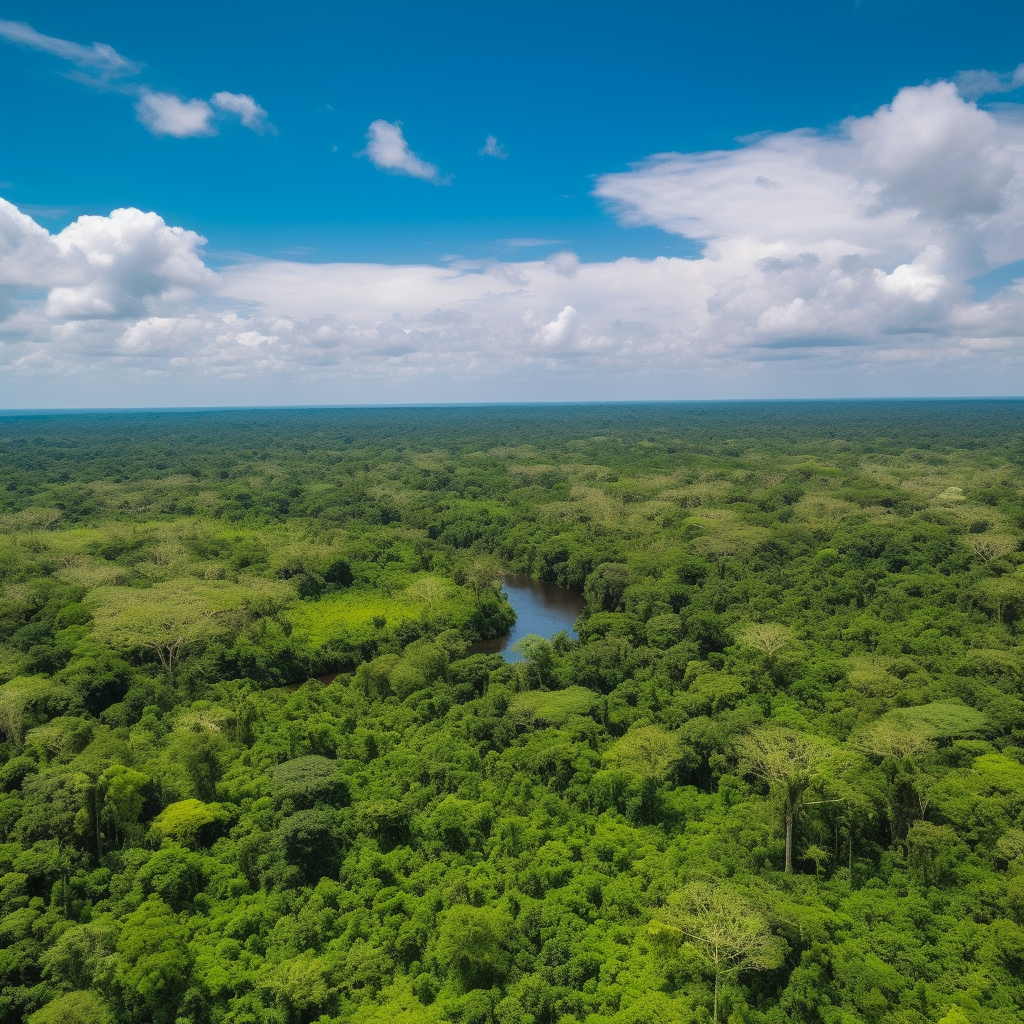June 28, 2023
Preserving the Amazon’s Moisture Recycling – A Key to Climate Resilience
Book a Demo
Climate change has emerged as one of the most pressing issues of our time, with far-reaching impacts on ecosystems worldwide. Among the most vulnerable regions is the Amazon rainforest, often referred to as the “lungs of the Earth.” In recent years, scientists have been studying the intricate relationship between climate change and moisture recycling in the Amazon, recognizing its crucial role in sustaining the rainforest’s unique biodiversity and global climate patterns. In this blog post, we delve into the fascinating findings presented in the article “Climate Change and Moisture Recycling in the Amazon” published in IOPscience, shedding light on the importance of this phenomenon and its implications for the future.
The Amazon rainforest covers a vast area of approximately 5.5 million square kilometers, spanning across nine countries in South America. It represents more than half of the world’s remaining tropical rainforests and is home to countless plant and animal species, many of which are endemic and highly specialized. Additionally, the Amazon plays a vital role in regulating global climate patterns by acting as a significant carbon sink and contributing to the moisture content in the atmosphere through a process known as moisture recycling.
Moisture recycling refers to the process by which water evaporates from vegetation and bodies of water, subsequently condenses into clouds, and falls back as precipitation. In the Amazon, this process is particularly crucial as it sustains the rainfall necessary for the rainforest’s health and stability. The Amazon basin generates a significant portion of its rainfall through moisture recycling, leading researchers to investigate how climate change may impact this intricate cycle.
The article from IOPscience explores the potential effects of climate change on moisture recycling in the Amazon. It highlights the intricate relationship between rising global temperatures, deforestation, and altered rainfall patterns in the region. As temperatures increase, evaporation rates intensify, potentially leading to more intense rainfall events. However, deforestation disrupts this delicate balance by reducing the amount of moisture available for recycling and altering local climate conditions.
Moisture recycling plays a vital role in supporting the Amazon’s exceptional biodiversity. Changes in rainfall patterns and moisture availability can impact plant growth, alter habitats, and jeopardize the survival of numerous species. Additionally, the Amazon’s indigenous communities heavily rely on consistent rainfall for their agricultural practices and livelihoods. Climate change-induced disruptions to moisture recycling pose significant challenges for both ecological and human well-being.
Given the critical role of moisture recycling in maintaining the Amazon’s ecological balance, efforts to mitigate climate change and protect the rainforest are paramount. International cooperation, sustainable land management practices, reforestation initiatives, and the reduction of greenhouse gas emissions are some of the key strategies that can help safeguard the Amazon’s future.
The study discussed in the article “Climate Change and Moisture Recycling in the Amazon” underscores the importance of moisture recycling in sustaining the Amazon rainforest and highlights the vulnerability of this intricate system to climate change. As global temperatures continue to rise, it is essential to prioritize conservation efforts and promote sustainable practices to mitigate the impacts of climate change on the Amazon and preserve this invaluable ecosystem for future generations.



